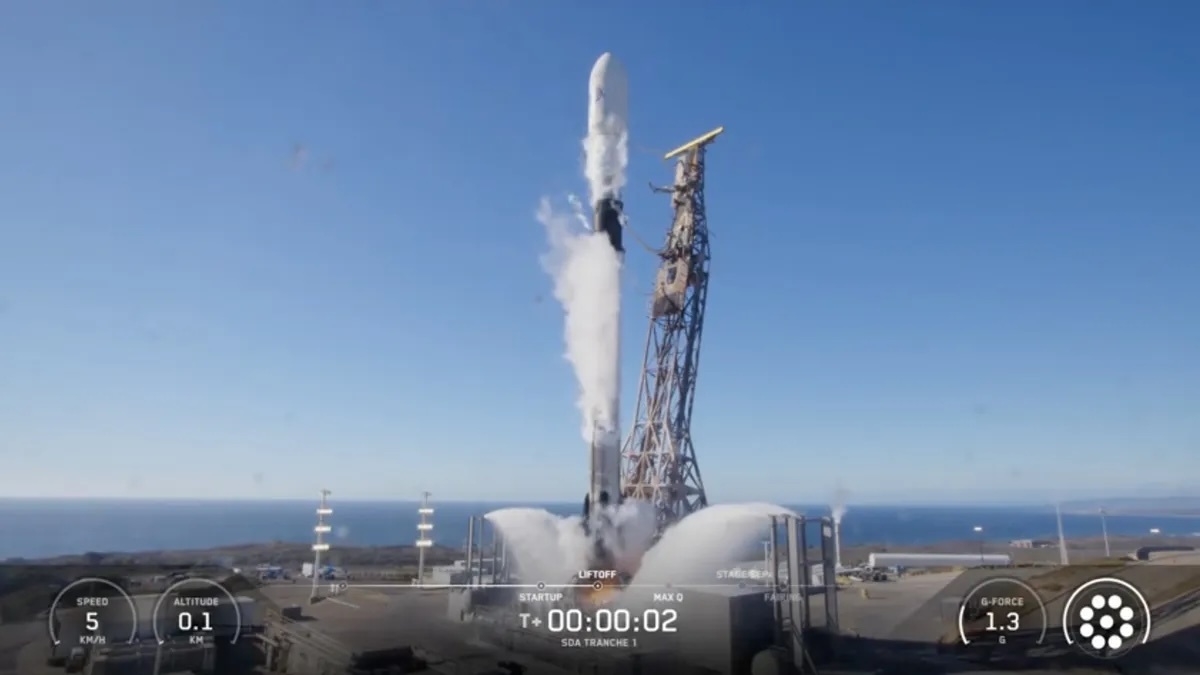16.10.2025
Liftoff occurred at 7:06 p.m. ET.

SpaceX launched 21 satellites for an advanced new U.S. military constellation this evening (Oct. 15).
A Falcon 9 rocket lifted off from California's Vandenberg Space Force Base today at 7:06 p.m. EDT (2306 GMT; 4:06 p.m. local California time), on a mission for the Space Development Agency (SDA).
The launch helps build out the SDA's Tranche 1 Transport Layer (T1TL), a network of 126 satellites in low Earth orbit (LEO) that "will provide global communications access and deliver persistent regional encrypted connectivity in support of warfighter missions around the globe," agency officials wrote in a explainer.
Today's mission was SpaceX's second T1TL launch. The first, which occurred on Sept. 10, also sent 21 satellites up from Vandenberg aboard a Falcon 9.
Colorado-based company York Space Systems built those spacecraft. The satellites that launched today, however, were manufactured by aerospace giant Lockheed Martin.
Northrop Grumman also scored an SDA contract for T1TL satellites. Each of these three companies will provide 42 spacecraft for the nascent constellation.
T1TL will be part of a larger LEO constellation, hundreds of satellites strong, that the SDA calls the Proliferated Warfighter Space Architecture (PWSA).
The PWSA satellites will be spread across seven "layers" — battle management, custody, deterrence, navigation, (missile) tracking, transport and support. This broad network will be refreshed every two years, keeping the SDA's space assets agile and up to date.
The Falcon 9's first stage came back to Earth about 8.5 minutes after liftoff today as planned, landing in the Pacific Ocean on the drone ship "Of Course I Still Love You."
It was the seventh launch and landing for this particular booster, which is designated B1093. It also launched SpaceX's first T1TL mission on Sept. 10, as well as five flights carrying the company's Starlink broadband satellites.
The Falcon 9's upper stage, meanwhile, continued hauling the 21 satellites to LEO. It's unclear when and exactly where they will be deployed today; SpaceX's mission description doesn't provide that information, likely at the request of the SDA.
Quelle: SD
